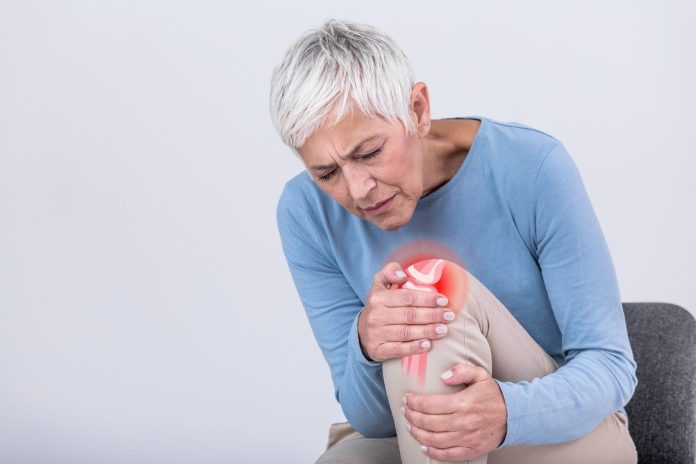Just as the famed Golden Girls faced life’s challenges with humor and resilience, you too can manage living with psoriatic arthritis in your golden years. It’s not an easy journey, but it’s certainly one you can navigate successfully.
You’ll learn to cope with the physical changes, master the emotional challenges, and make lifestyle modifications. From understanding the importance of regular exercise to making dietary adjustments, you’ll find ways to alleviate your symptoms.
Medication and therapy will play a significant role, and you’ll realize the value of building a supportive network.
This guide is your companion in adapting and thriving with psoriatic arthritis as you embrace your golden years.
Understanding Psoriatic Arthritis
First, you need to understand that psoriatic arthritis is one of the many types of arthritis you could develop in your later years. It’s an autoimmune condition where your body’s immune system mistakenly attacks healthy joints and skin. This causes inflammation, resulting in pain, stiffness, and physical disability. It’s associated with psoriasis, a skin condition characterized by red patches with silvery scales.
It’s important to note that not everyone with psoriasis will develop psoriatic arthritis, but it’s more common in those with severe skin symptoms. Psoriatic arthritis usually affects people between the ages of 30 and 50, but it can occur at any age.
There are five types of psoriatic arthritis. Symmetric psoriatic arthritis mirrors symptoms on both sides of your body, while asymmetric doesn’t. Distal interphalangeal predominant involves the last joint in fingers and toes. Spondylitis affects the spinal column, and arthritis mutilans is the most severe and rarest form.
Currently, there’s no cure for psoriatic arthritis. However, treatment options exist that can help manage symptoms and prevent joint damage. It’s crucial to get diagnosed early and start treatment promptly to slow disease progression.
Risk Factors and Symptoms
In your golden years, you’re more likely to develop psoriatic arthritis if you’ve certain risk factors and you may also start noticing specific symptoms. Having psoriasis, a family history of psoriatic arthritis, or being between the ages of 30 and 50 are key risk factors. Although the disease can manifest at any age, it’s more common in older adults.
Firstly, on the symptom front, let’s talk about your joints. You might experience pain, stiffness, or swelling, particularly in your hands, knees, ankles, feet, or lower back. These symptoms often appear gradually, but sometimes they can emerge suddenly. Secondly, psoriatic arthritis can affect your nails, causing them to pit, change color, or separate from the nail bed. You could also feel unusually fatigued.
Remember, it’s not about experiencing all these symptoms, but any one of them could be a sign of psoriatic arthritis. Recognizing these early signs and getting a proper diagnosis can help manage the disease effectively.
In the next section, we’ll explore coping strategies for the physical changes you may experience due to psoriatic arthritis.
Coping With Physical Changes
As you navigate the physical changes brought on by psoriatic arthritis, it’s crucial to arm yourself with effective coping strategies to maintain your quality of life. Here are some key steps to consider:
- Adopt a Healthy Lifestyle: Regular physical activity combined with a balanced diet can help manage your symptoms and boost your overall health. Avoid excessive alcohol and quit smoking to reduce inflammation and potential flare-ups.
- Take Medication as Prescribed: It’s important not to skip your medication. They’re designed to slow down the disease’s progression and manage pain. Always consult with your healthcare provider before making any changes to your medication routine.
- Use Assistive Devices: There’s a broad range of aids available that can help with mobility and everyday tasks. These include walking aids, jar openers, or long-handled shoe horns. Don’t hesitate to use these tools to make your life easier.
- Engage in Physical Therapy: A physical therapist can provide exercises to improve your flexibility, strength, and balance. This can help you maintain your independence and continue with your daily activities.
Recognizing Psoriatic Arthritis signs is not about experiencing all these symptoms, but any one of them could be a sign of psoriatic arthritis. Recognizing these early signs and getting a proper diagnosis can help manage the disease effectively.
Navigating Emotional Challenges
Beyond the physical adjustments, you’ll also have to grapple with the emotional challenges that come with living with psoriatic arthritis. The chronic nature of the disease, coupled with the unpredictability of flare-ups, can lead to feelings of anxiety, stress, and even depression.
Confronting these emotions head-on isn’t easy. It’s critical, however, to acknowledge and address these feelings. Ignoring them won’t make them go away. In fact, stress and anxiety can exacerbate your symptoms, creating a vicious cycle.
Seek professional help if you’re struggling with these emotions. Therapists and counselors specialize in helping people navigate through emotional turmoil. Cognitive-behavioral therapy, for example, can equip you with strategies to manage stress and anxiety effectively.
Support groups can also be beneficial. Connecting with others who are going through similar experiences can provide comfort and practical advice. Online communities and local groups can offer a safe space for you to share your challenges and victories.
Importance of Regular Exercise
You’ll find regular exercise to be an essential component in managing your psoriatic arthritis effectively. Regular physical activity helps reduce inflammation, maintain joint mobility, and boost overall health. However, to get the most out of your exercises without aggravating your condition, it’s important to approach this regimen strategically.
Here are four crucial steps to take:
- Consult your doctor or physiotherapist: Before starting any exercise program, always seek medical advice. They can recommend the most suitable exercises considering your health status and physical abilities.
- Start slow and gradually increase: Don’t push yourself too hard. Begin with low-impact exercises and gradually increase the intensity as your body adapts.
- Balance your exercises: Your workout regimen should incorporate a mix of flexibility, strength, and aerobic exercises for optimal results.
- Listen to your body: If any exercise causes pain or discomfort, stop immediately. Always pay attention to your body’s signals and adjust your routine accordingly.
Dietary Adjustments for Relief
While exercise plays a vital role in managing psoriatic arthritis, it’s equally important that you tweak your diet for relief. A well-balanced, nutrient-rich diet can reduce inflammation, boost your immune system, and help manage your symptoms.
Firstly, aim to incorporate omega-3 fatty acids into your meals. Foods such as fatty fish, walnuts, and flaxseeds can provide these essential anti-inflammatory fats.
Secondly, increase your intake of fruits, vegetables, and whole grains, which are packed with antioxidants that can help combat inflammation. Also, consider lean proteins like chicken or turkey, which can offer sufficient protein without exacerbating your condition.
Avoid foods that can trigger inflammation, such as processed foods, red meats, and dairy products. These foods contain saturated fats which can worsen your psoriatic arthritis symptoms. Limit your alcohol and caffeine intake as well, as these can interfere with your medications and increase your risk of flare-ups.
Lastly, maintaining a healthy weight is crucial. Excess weight can put more pressure on your joints, worsening your symptoms.
Role of Medication and Therapy
In managing your psoriatic arthritis, a significant part of your strategy should include the appropriate use of medication and engagement in therapeutic exercises. These elements are crucial in managing your symptoms, improving your mobility, and enhancing your quality of life.
The role of medication and therapy in managing your psoriatic arthritis can be broadly categorized into four areas:
- Pain Management: Medications such as nonsteroidal anti-inflammatory drugs (NSAIDs) can help reduce pain and inflammation.
- Disease Modifying Drugs: These drugs, including methotrexate and sulfasalazine, work to slow down the disease’s progression.
- Biologic Agents: These are advanced drugs that target specific parts of the immune system to control inflammation.
- Physical Therapy: Regular engagement in therapeutic exercises can help maintain joint flexibility and strength, promoting mobility and reducing pain.
It’s important to consult with your healthcare provider to determine the best treatment plan for you, taking into account your overall health, lifestyle, and personal preferences. Utilizing medication and therapy effectively can significantly enhance your ability to manage your psoriatic arthritis.
Now, let’s delve into the importance of building a supportive network in managing your condition.
Building a Supportive Network
Building a strong support network can significantly aid in your journey to manage psoriatic arthritis effectively. This network could include healthcare professionals, friends, family, and fellow patients. Each member plays a unique role in your overall well being and disease management.
Healthcare professionals can provide you with accurate information, treatments, and strategies to manage your symptoms. They’re equipped to guide you through the complexities of the disease and the effects of various treatment options.
Your friends and family can offer emotional support, practical help, and companionship, reducing feelings of isolation. It’s important you communicate your needs to them clearly. Encourage them to learn about psoriatic arthritis so they can better understand what you’re dealing with.
Joining support groups, either in person or online, can also be beneficial. Connecting with people who’re going through similar experiences can provide a sense of community and shared understanding. You’ll learn from their experiences, get tips on managing the disease, and gain emotional support.
Conclusion
Navigating psoriatic arthritis in your golden years isn’t a walk in the park, but it’s not climbing Everest either. With lifestyle adjustments, regular exercise, a healthy diet and timely medication, you can manage the physical and emotional aspects.
Remember, you’re not alone in this journey. Reach out, build a supportive network. Like Odysseus, you’ll navigate through stormy seas and come through stronger.
Adapt, endure, and embrace the golden years with grace and resilience.
























